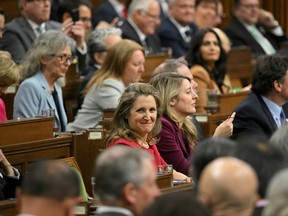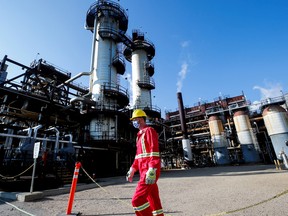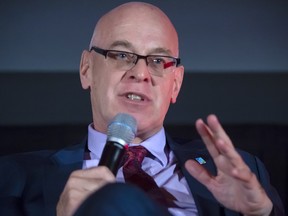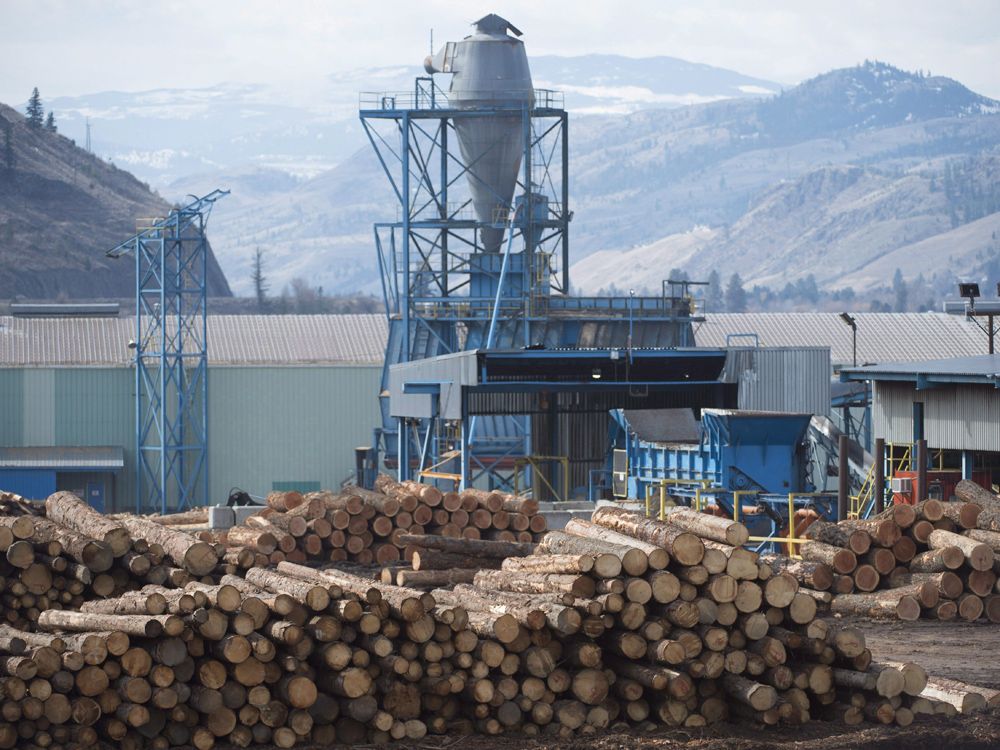Will Ottawa’s budget disappoint or impress?

Article content
Financial Post writers went back to their notebooks to set the scene for budget 2023. Mining reporter and Down to Business podcast host Gabriel Friedman needed extra space to detail all the ways industry and activists want Ottawa to accelerate the green transition.
Advertisement 2
Article content
As Finance Minister Chrystia Freeland prepares to deliver the 2023-24 budget, she’s making clear that the scale of her ambitions runs high, especially as it concerns investment in the green economy.
Article content
In a speech on March 22, she described the energy transition as ”the most significant economic transformation since the Industrial Revolution” and an opportunity that cannot be wasted.
Article content
“Canada will either capitalize on this historic moment, on this historic opportunity before us, or we will be left behind,” Freeland said. “That is why the plan we will release next Tuesday will include a serious investment in Canadians — in good jobs, in more vibrant communities, and in a new era of economic prosperity that we will build together.”
Advertisement 3
Article content
The federal Liberals have long cast the energy transition and the green economy as the centrepiece of their governing mantra, but the stakes are different this year.
In August, U.S. President Joe Biden signed the Inflation Reduction Act (IRA) — legislation festooned with US$369 billion of subsidies, from production credits for hydrogen and carbon capture, to incentives to purchase electric vehicles made in North America.
Canada, which achieved a political consensus on climate change much earlier, no longer has that first-mover advantage. Freeland is feeling pressure from all sides — industries such as oil and gas and mining, of course, but also environmental advocates — to keep Canada in step.
At the same time, Canada isn’t the United States. The economy — about $2 trillion in gross domestic product in 2021 — is about one-tenth of the U.S. economy. So the question in many ways is whether the budget that Freeland delivers will disappoint or impress?
Article content
Advertisement 4
Article content
Carbon capture credits
For industries such as oil and gas, which contributed on average five per cent of Canadian gross domestic product between 2000 and 2020, the main thing they are seeking in the budget is production tax credits for capturing carbon dioxide.
Secondly, with the carbon tax heavily opposed in some quarters, oil and gas and other industries are hoping that the federal government unveils a policy known as “carbon contracts for differences,” which would create contracts that lock future governments to either keeping the carbon tax, or if it is ditched, shouldering some of the cost that companies pay to install billions of dollars of carbon capture technology.
“We would like to see something simple that puts Canada on the equal footing with the U.S.,” said Mark Cameron, vice-president of external relations at Pathways Alliance, a group of the five largest oilsands producers. “We have to start buying pipe and filing regulatory applications for our pipeline projects” to capture carbon.
Advertisement 5
Article content
Cameron said the Finance Department has insisted that the government is more interested in tax credits to offset the cost of building a carbon capture facility, which can run into the billions of dollars for the largest projects, rather than providing tax credits for capturing carbon.
The former means the government would be on the hook for a one-time tax credit applied to the cost of building a carbon capture facility, but the latter would represent a recurring tax credit that companies can claim for as long as a facility operates.
We’re calling on Minister Freeland to use budget 2023 as an opportunity to finally deliver on the promise to end fossil fuel subsidies
Julia Levin
Cameron estimated that capital costs would account for about 40 per cent of the overall cost of a carbon capture facility over a 20-year span, while production tax credits represent 60 per cent.
Advertisement 6
Article content
Now that the U.S. IRA is offering production tax credits, Cameron and others said they believe that the Finance Department may be more open to providing production tax credits, though nothing has been decided.
“I don’t know whether the government can match dollar for dollar what’s going in the U.S., and now Europe and the U.K., in terms of incenting carbon capture,” said Cameron. “But we need to step up.”
`End fossil fuel subsidies’
On the other side of the spectrum, Freeland also faces pressure from environmental advocates not to devote scarce resources to the oil and gas sector, which enjoyed record profits in 2022.
“We’re calling on Minister Freeland to use budget 2023 as an opportunity to finally deliver on the promise to end fossil fuel subsidies,” said Julia Levin, associate director, national climate at Ottawa-based Environmental Defence.
Advertisement 7
Article content

Levin opposes subsidizing carbon capture for fossil fuels, noting that an estimated 80 per cent of the emissions from fossil fuels occur downstream and are not captured.
She added that plans to use carbon capture on fossil fuels to produce hydrogen should not be available for tax credits, citing objections by scientists and other academics about its practicality as a climate change solution.
Instead, she contends those funds would be better spent investing in electricity — creating new distribution, shoring up grids and building more renewable power.
Michael Bernstein, executive director of Clean Prosperity, a climate and economy focused think-tank, said that he expects significant funding for electricity in the budget.
Advertisement 8
Article content
“I’m expecting significant measures that will include electricity, tax credits, and more,” Bernstein said. “The biggest question is whether they also include some signal on CCfDs [the acronym for carbon contracts for differences.]
I’m expecting significant measures that will include electricity, tax credits, and more
Michael Bernstein
But Bernstein said that for Canada’s carbon pricing systems to incentivize investment, it needs to signal that it’s willing to put in a broad-based program of carbon contracts for differences so that businesses making investments have certainty that there will be a carbon tax in the future, and they can recoup investments.
There’s a good chance this will make the budget, but “I wouldn’t expect all the details,” Bernstein said.
Canada Growth Fund
Much of the attention will also focus on whether this budget fleshes out the Canada Growth Fund, announced in budget 2022 and updated in the Fall Economic Statement. It is a $15-billion fund to catalyze private investment in clean technology.
Advertisement 9
Article content
Whether it receives more funding or directives on where it will invest, are key questions.
On March 23, Reuters reported that the budget will include a 30 per cent tax credit for investments in cleantech manufacturing equipment — a bundle that likely includes a range of materials, including equipment used to process critical minerals for electric vehicles.

Pierre Gratton, president of the Mining Association of Canada, said that last year the federal government included a 30 per cent tax credit for critical mineral exploration, which allows companies searching for lithium and other listed metals to write off part of their expenses.
He said preliminary data suggest that the tax credit is spurring more investment in exploration for critical minerals, but added that so far the federal government has focused more on downstream manufacturing, such as the electric vehicle supply chain, and neglected the upstream mines that supply raw materials to those facilities.
Advertisement 10
Article content
Gratton noted that Canada’s base metal production — including key metals such as nickel and copper — has been declining for years. Of course, there is not necessarily a single obvious shovel-ready mining project within Canada that just needs federal funding to begin operations.
“Is there another Voisey’s Bay out there that just needs funding? No not yet,” he said, referring to the giant nickel mine in Labrador currently owned by Vale. “But there are a number of smaller projects that added together aren’t insignificant.”
Advertisement 11
Article content
In a Feb. 10 letter he sent to the Finance Department, Gratton called for a number of tax incentives to help mining companies, including a policy that would allow companies to classify the costs of building a critical mineral mine as expenditures for income tax purposes, or exploration expenses.
In addition, the letter called for the government to extend the scope of its 30 per cent tax credit for critical mineral exploration such that it also can be used to write off expenses incurred in “the actual production and development of mines whose primary output is critical minerals.”
“Lack of financing for mine production and development (as distinct from exploration) has been identified as a major impediment to the actual production of critical minerals in Canada,” Gratton write.
Advertisement 12
Article content
It’s key that we move quickly, and that means Canada is going to have to move at a different pace than it has historically
Michael Bernstein
Other requests include proposals to expand income tax write-offs for research and development, expanding income tax benefits for large scale hydropower projects, and critical mineral ore processing or manufacturing that reduces greenhouse gas by at least 80 per cent.
The bevy of requests from industry to the non-profit sector means that Freeland is facing pressure to create a budget that invests heavily with the green economy and also attracts private investment.
“There’s clearly people thinking about where they’re going to make their next investment,” said Bernstein. “A core part of Canada’s economic growth strategy is to attract investment in the [green economy]. It’s key that we move quickly, and that means Canada is going to have to move at a different pace than it has historically.”
• Email: gfriedman@postmedia.com | Twitter: GabeFriedz
Canada federal budget 2023: Expectations are high for green subsidies
2023-03-27 10:00:04








Comments
Postmedia is committed to maintaining a lively but civil forum for discussion and encourage all readers to share their views on our articles. Comments may take up to an hour for moderation before appearing on the site. We ask you to keep your comments relevant and respectful. We have enabled email notifications—you will now receive an email if you receive a reply to your comment, there is an update to a comment thread you follow or if a user you follow comments. Visit our Community Guidelines for more information and details on how to adjust your email settings.
Join the Conversation